Texas Blue Scaled quail

Lifespan
5-7 years
Height
13-18 cm
Length
25-30 cm
Quail Ratio
1 Male to 2-3 Females
The Texas Blue Scaled Quail is a colorful variant of the Scaled Quail, known for its bright blue-gray plumage and scaled feathers. Native to Texas and arid regions, it prefers grasslands and deserts. These ground-dwelling birds are agile runners and live in social coveys. Their diet consists of seeds, insects, and vegetation.
Texas Blue Scaled Quail Call (Male Call)
Physical Characteristics
How many females to a male
Texas Blue Scaled Quail are best kept in a ratio of one male to two or three females. These birds are semi-territorial, and having too many males can lead to aggression. Keeping this balanced ratio helps reduce fighting and prevents hens from being over-mated. In the wild, scaled quail often form small pair bonds or harems, so replicating this natural structure in captivity supports healthier social dynamics and improves breeding success.
Size
These quails typically measure 10–12 inches (25–30 cm) in length and stand around 5–7 inches (13–18 cm) tall, making them medium-sized.
Appearance
The Texas Blue Scaled Quail is known for its vibrant blue-gray plumage, which features a striking scale-like pattern across its body. Its distinctive white-tipped crest, often called a "cotton top," contrasts beautifully with the bluish tones. Brownish wings and tail, paired with a pale belly, complete its unique appearance.
Lifespan
In captivity, Blue Scaled Quails can live 5–7 years with proper care. Wild quails often have shorter lifespans due to predation and environmental factors.
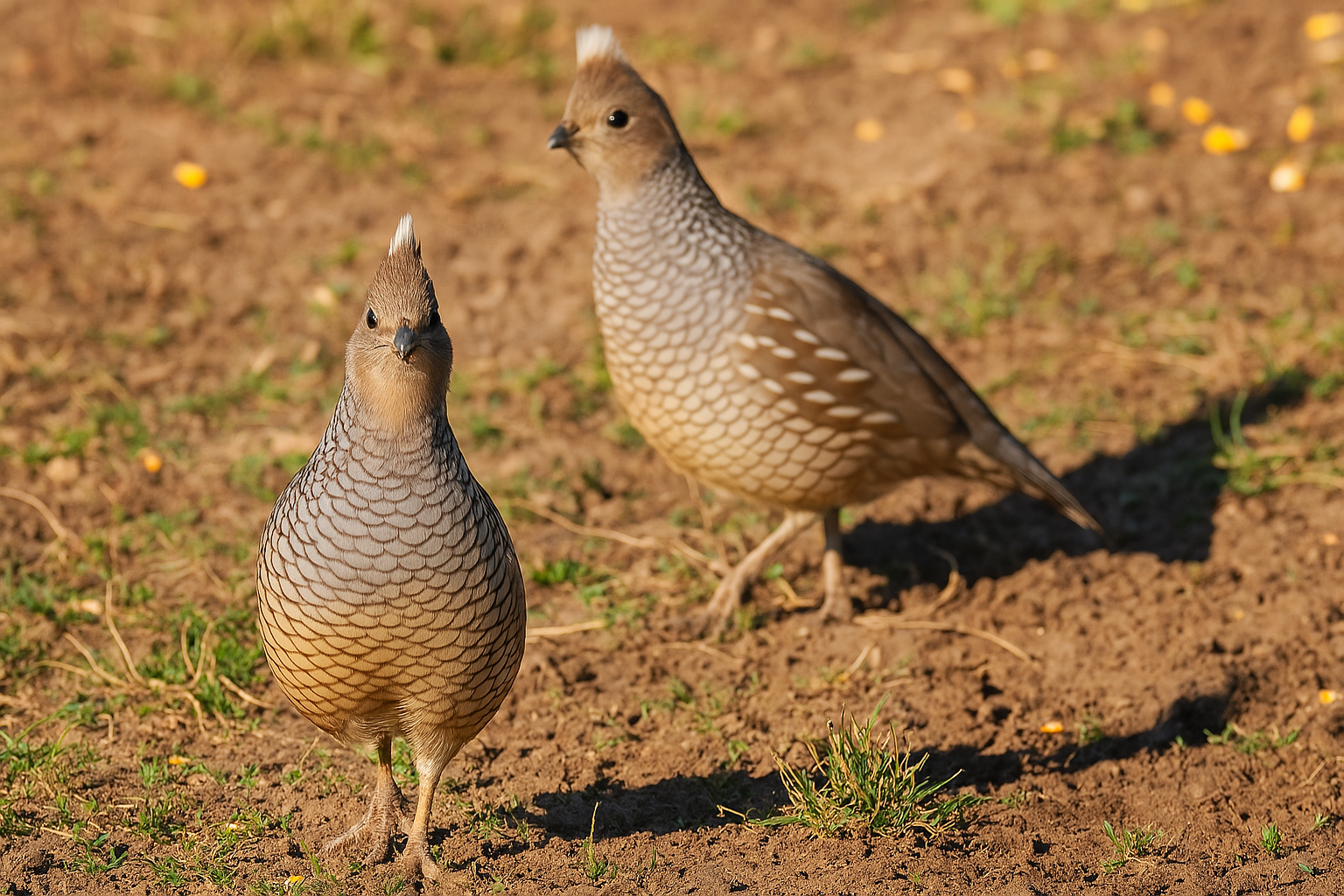
Habitat
Size of habitat
In the wild, Blue Scaled Quails inhabit arid and semi-arid regions, such as deserts, grasslands, and scrublands. They prefer areas with sparse vegetation and access to ground cover for protection. As pets, they require a spacious outdoor aviary with plenty of shade, hiding spots, and ground cover to mimic their natural environment.
Shelter
Ensure the enclosure has sheltered areas to protect them from harsh weather and give them a sense of security.
Dust Bathing
Texas Blue Scaled quails enjoy dust bathing, which helps them keep their feathers clean and free of parasites. Offer a shallow container filled with sand or fine dirt for this activity.
Protection
Ensure the enclosure is secure with fine mesh to prevent escapes and protect from predators. Provide a sheltered area to shield quails from weather extremes.
Diet
Food
Their diet consists mainly of seeds, grains, and insects. In captivity, they can be fed commercial game bird feed
Protein
Their diet can be supplemented with fresh greens, small insects, and grains to mimic their natural foraging behavior.
Water
Ensure they have constant access to clean water.
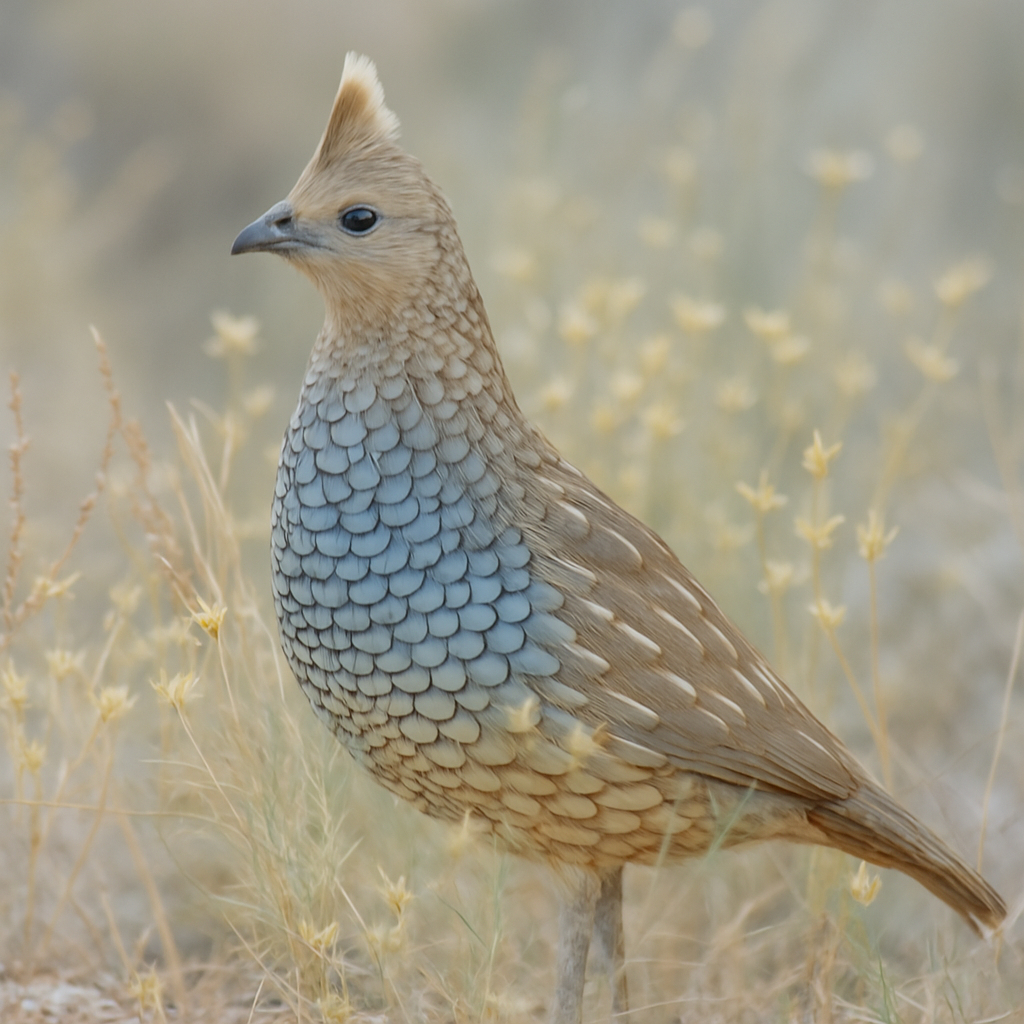
Social Behavior
Texas Blue Scaled Quails are social birds, usually forming small coveys in the wild. As pets, they are best kept in pairs or small groups. Males can become territorial during the breeding season, so avoid housing multiple males together.
Activity
Texas Blue Scaled Quails are active ground-dwellers, often scratching through the substrate for food. They need space to move around, dust bathe, and hide under cover to feel secure.
Handling
Handling Texas Blue Scaled Quail requires calmness and gentleness. These birds are sensitive and skittish, so slow movements and soft voices are essential to avoid stress. When picking them up, use both hands to support their body and feet. Limit handling to necessary tasks and always return them gently to their enclosure to ensure they feel safe.
Health
Clean Environment
Providing a clean and spacious environment.
Health Monitoring
Regular monitoring for common vet ailments such as respiratory tract infections and parasites are recommended. Access to fresh water and proper diet ensure their well-being.
History
The Texas Blue Scaled Quail (Callipepla squamata), also known as the Blue Quail or Cotton Top, is native to the southwestern United States and northern Mexico. These quails have been admired for their unique scaled appearance and adaptability to arid climates. Historically, they have been hunted as game birds and are known for their ability to thrive in challenging desert environments.
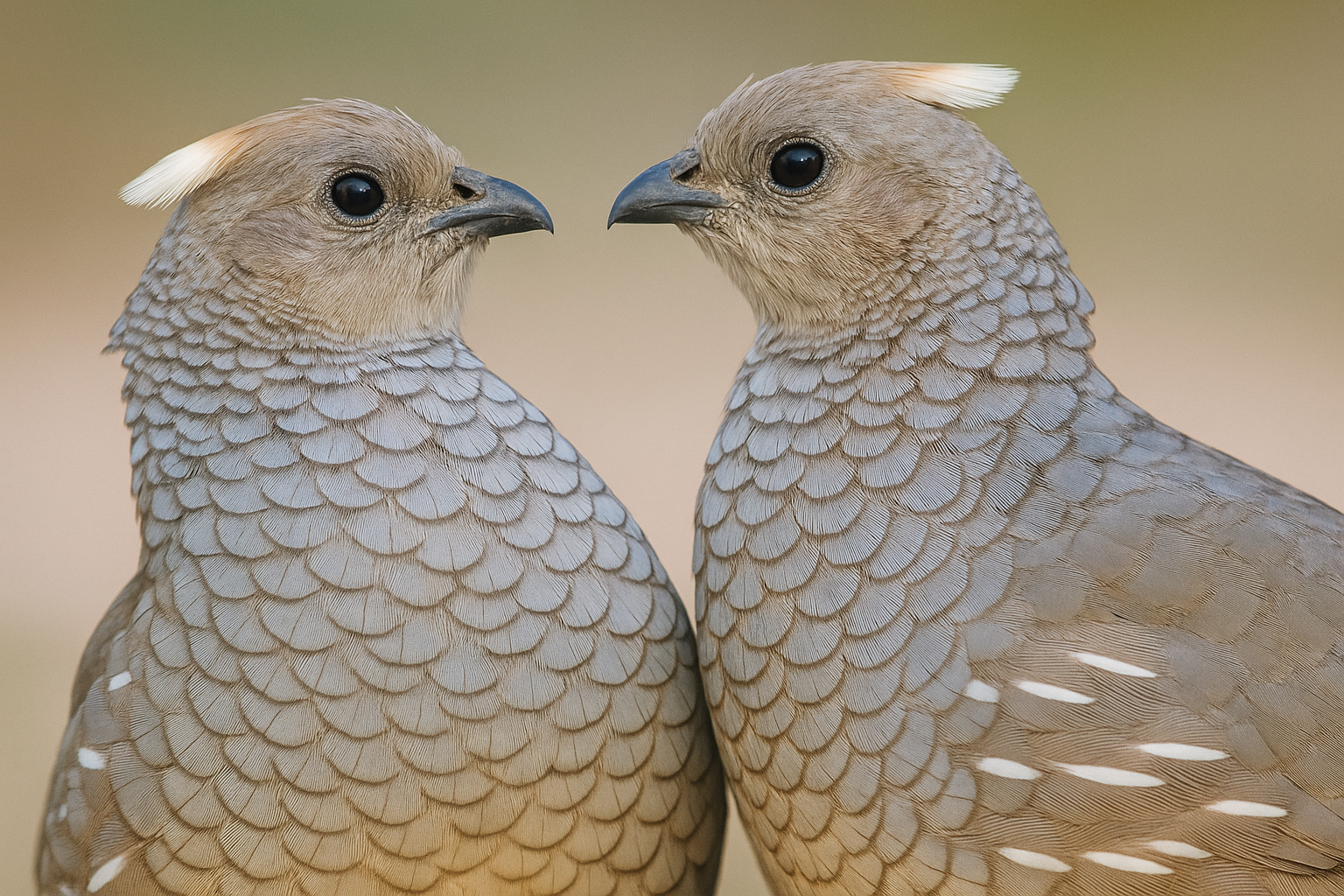
Breeding
Breeding Season
The breeding season for Texas Blue Scaled Quail typically starts in the spring and lasts into the summer. During this time, males perform courtship displays, including calling and puffing up their plumage to attract females.
Nesting
Texas Blue Scaled Quail prefer to nest on the ground in tall grasses, shrubs, or other vegetation that offers concealment. The female will lay around 12–16 eggs, which she incubates for about 23 days.
Quail Chick Care
Brooder Setup
Temperature:For chicks, maintain a brooder temperature of around 95°F (35°C) during the first week. Gradually reduce the temperature by 5°F (3°C) each week until it reaches room temperature. Ensure the brooder is well-ventilated and has enough space for the chicks to move around.
Feeding
Provide a high-quality starter feed for chicks, rich in protein (around 20-24%). For adults, offer a mix of grains, seeds, and greens, supplemented with insects. It's important to keep the feeding area clean and offer fresh food regularly.
Feeder and Waterer
Use shallow feeders and waterers to prevent chicks from drowning. Marbles or pebbles can be placed in water dishes to keep chicks safe.
Outdoor Transition
When transitioning quail to an outdoor environment, wait until they are fully feathered, which usually happens around 6-8 weeks old. Gradually introduce them to outdoor conditions in a secure pen to ensure they adjust without stress.
Joining the adults
Integration with Adults
Introducing young quail to adult quails should be done gradually. Allow them to see each other through a barrier before letting them mix to minimize aggression. Keep a close eye on interactions to ensure no bullying or injuries occur.
Observe Behavior
Pay attention to the behavior of both chicks and adults during the integration process. Watch for signs of stress, aggression, or dominance issues. Healthy quail should display normal feeding behavior and move about freely without signs of distress.
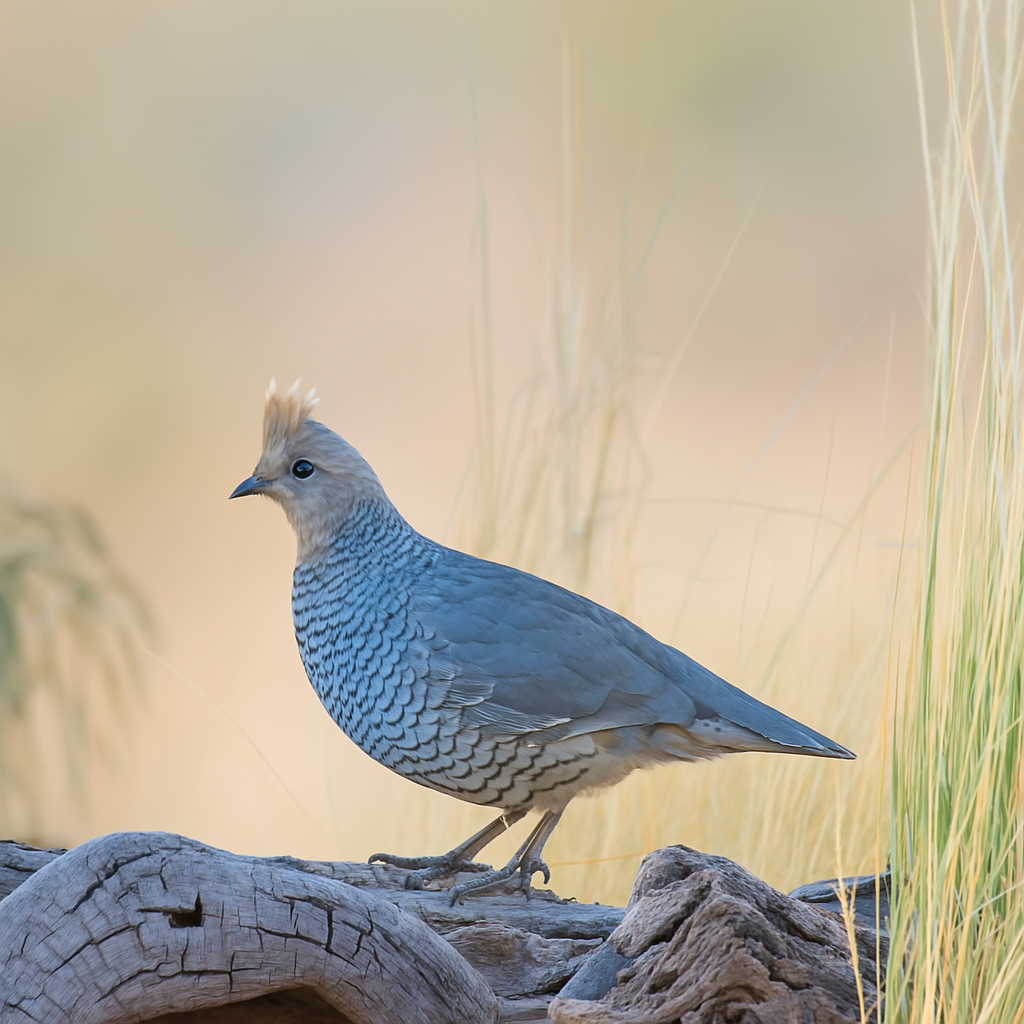
Fun Fact
The Texas Blue Scaled Quail is known for its distinctive blue-gray plumage, which helps it blend into the rocky, shrub-covered landscapes of its habitat. Interestingly, when they feel threatened, they often freeze in place rather than flying, relying on their camouflaged feathers to avoid detection.
In this article
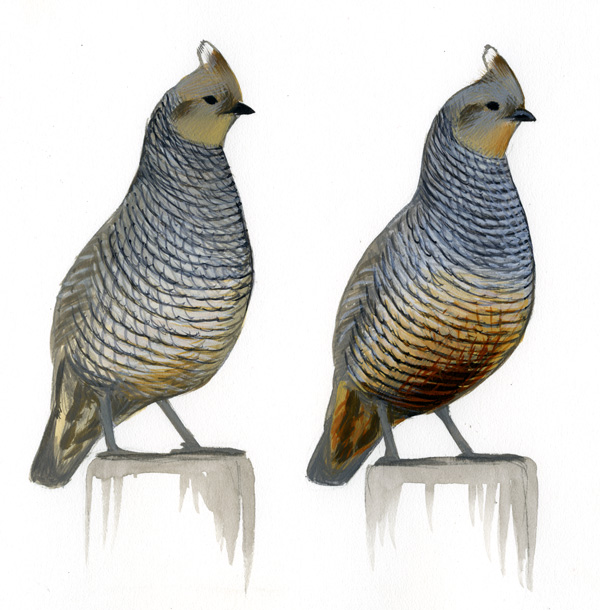
Similar quails
Right: Texas Blue Scaled quail
Left: Scaled quail
Size
The Texas Blue-Scaled Quail is generally larger than the standard Scaled Quail, with a more robust body.
Coloration
The Texas Blue-Scaled Quail has a richer blue-gray color with a more pronounced blue or bluish tint on the back, while the Scaled Quail has a lighter, more uniform brownish-gray body with subtle blue tones around the neck and breast.
Living
The Texas Blue-Scaled Quail is more commonly found in central and western Texas, while the Scaled Quail has a broader range, extending into parts of Arizona, New Mexico, and Mexico.
Behavior
Both species are ground-dwelling, but the Texas Blue-Scaled Quail tends to be more adaptable to a variety of landscapes, including grasslands and desert regions, whereas the Scaled Quail is typically found in more arid, scrubby areas.

Eggs
Texas blue scaled quail eggs are small, typically weighing around 8-10 grams. They have a light tan or cream-colored shell, often speckled with darker brown spots, giving them a textured appearance. The eggs are smooth and firm, with a slightly glossy finish. Their size and markings make them visually appealing, with a delicate and rustic look compared to other quail eggs.
Legal Considerations
Check local laws and regulations regarding the keeping of quail. Some areas may have specific requirements or restrictions.
Permits
In some regions, permits may be required to keep or breed quail.

Montezuma Quail
Montezuma Quail, native to Mexico and the southwestern US, are prized for their unique, camouflaged plumage and subtle crest. These naturally shy and solitary birds are challenging to breed in captivity, and while they require careful health monitoring, their distinctive beauty appeals to experienced aviculturists.
Read more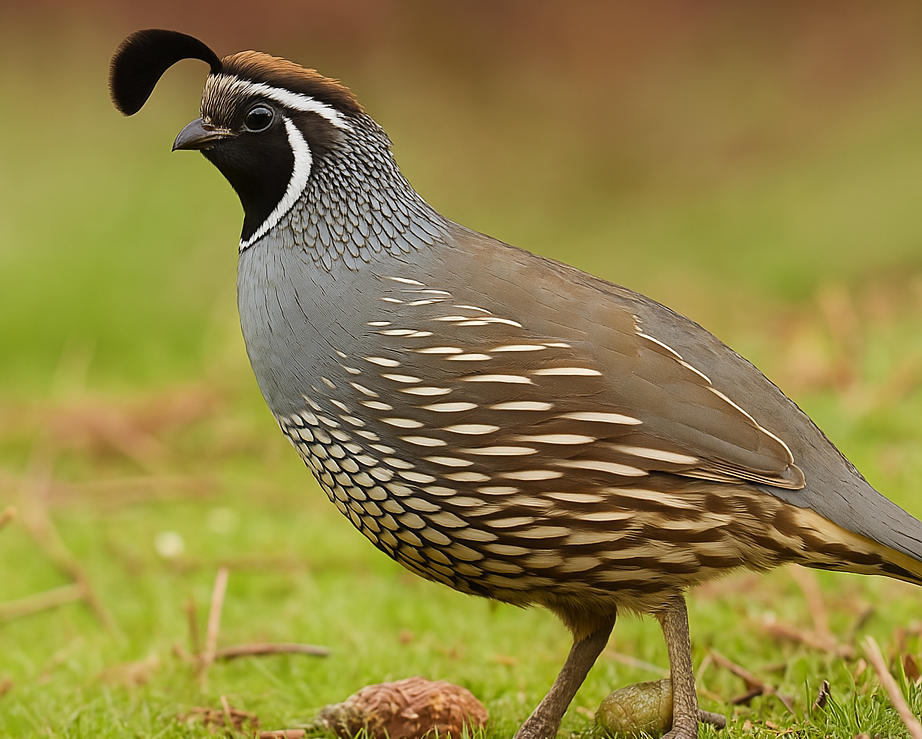
California Quail
The California Quail (Callipepla californica) is a charming and distinctive bird known for its plump body, beautiful plumage, and characteristic head plume, often referred to as a "topknot." These birds are native to the western United States but can be kept as pets with proper care and attention. Here's a comprehensive look at keeping California Quail as pets
Read more
Jumbo Celadon Quail
Jumbo Celadon Quail, also known as Coturnix quail, are a popular breed among poultry enthusiasts due to their distinctive blue or light green eggs, larger size, and efficient egg production. They are a selectively bred variety of the standard Coturnix quail, known for their increased body weight and unique egg coloration.
Read more
Bobwhite Quail
The Bobwhite Quail, also known as the Northern Bobwhite or Virginia Quail (Colinus virginianus), known for their distinctive call and charming appearance, can make unique and interesting pets. Bobwhite quail Have long been popular in North America. They require specific care and habitat conditions to thrive in a domestic setting.
Read more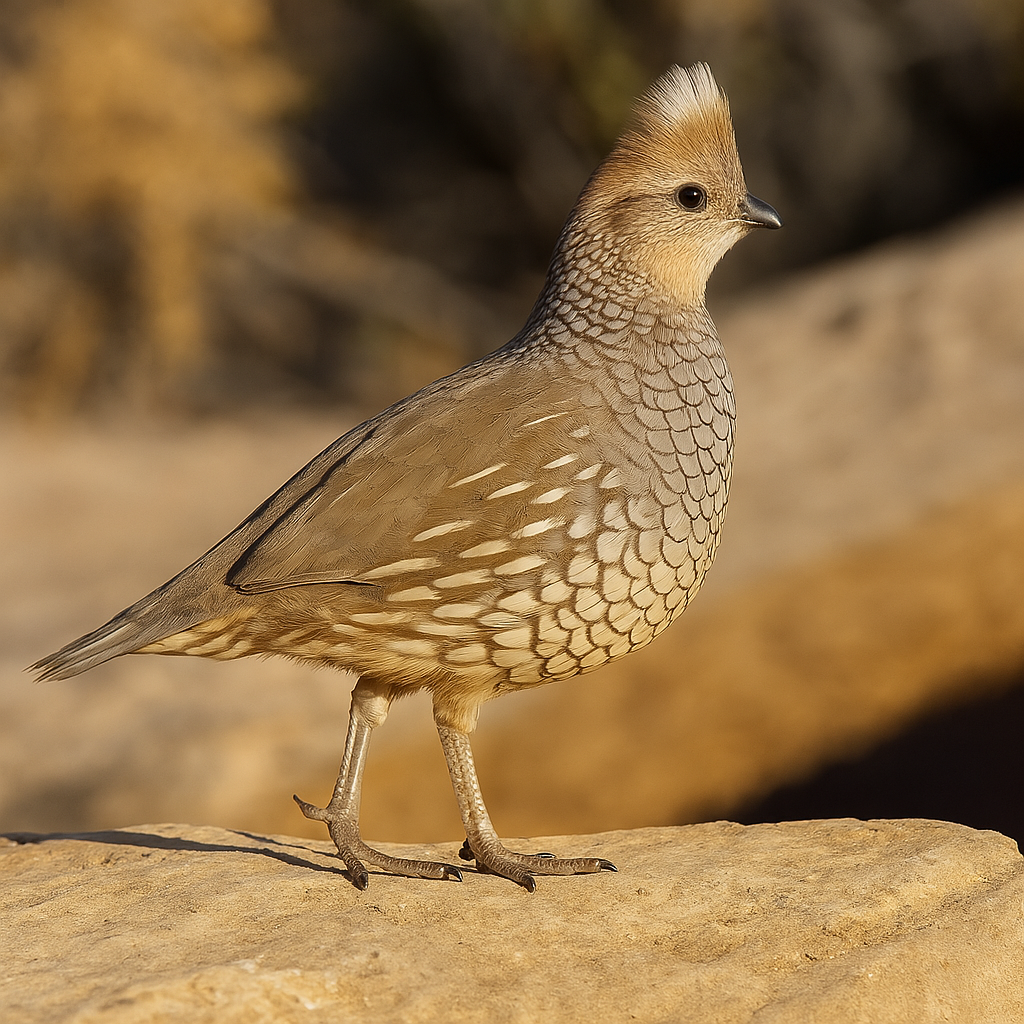
Scaled Quail
The Scaled Quail, known for its unique scaly feather pattern, is an active bird that needs space and a secure environment. Though more skittish than other quail, with proper care, they can live 3-6 years in captivity.
Read more